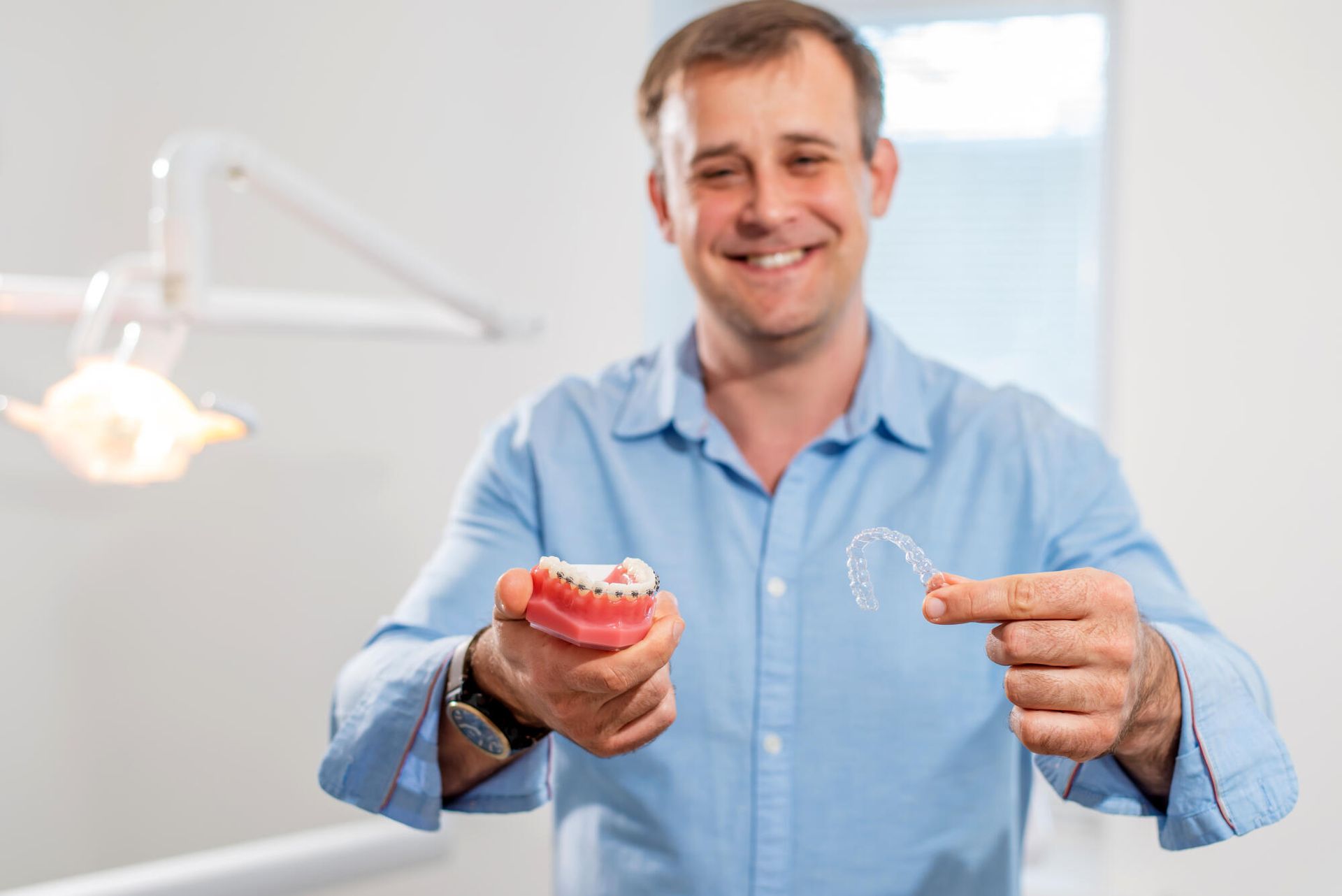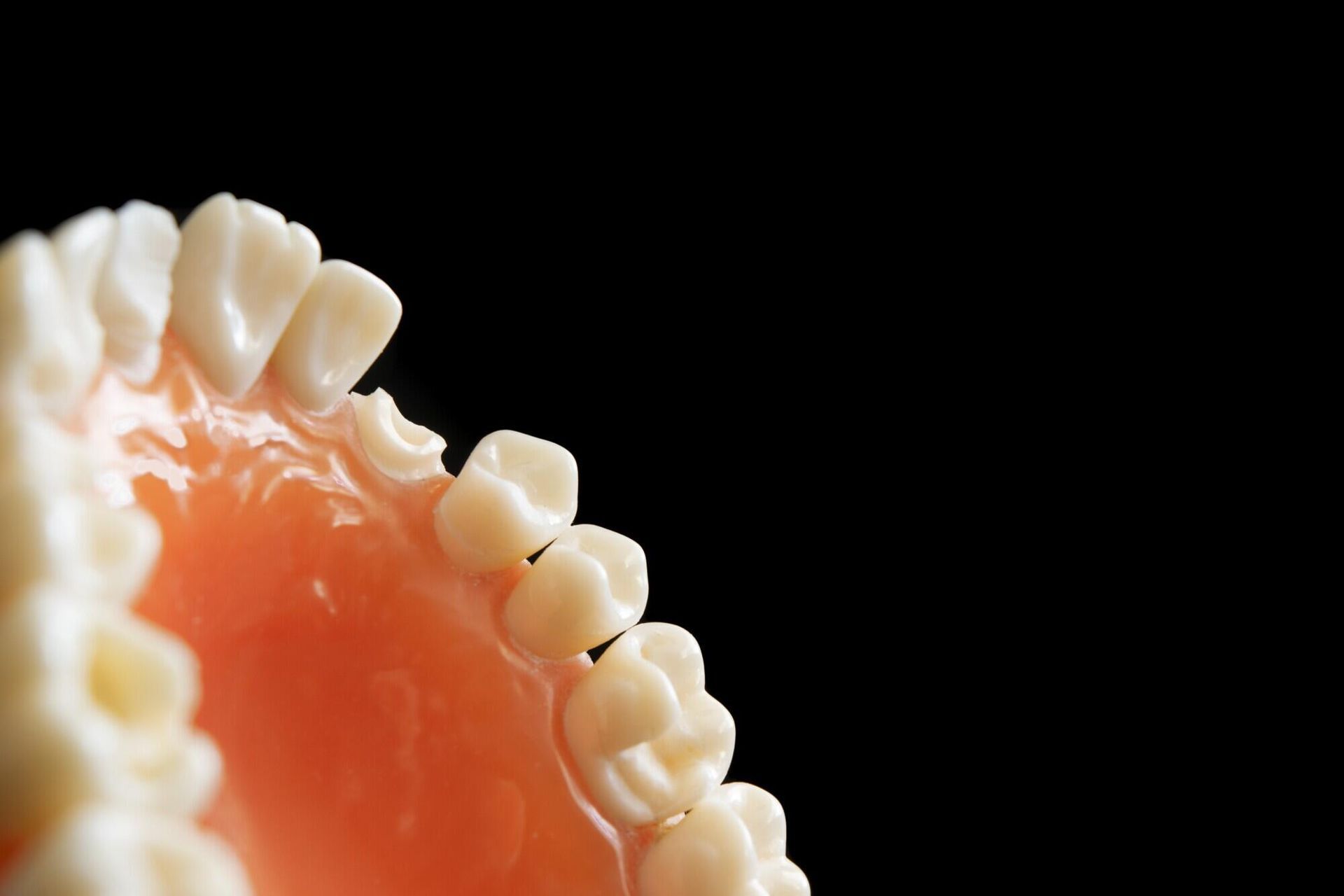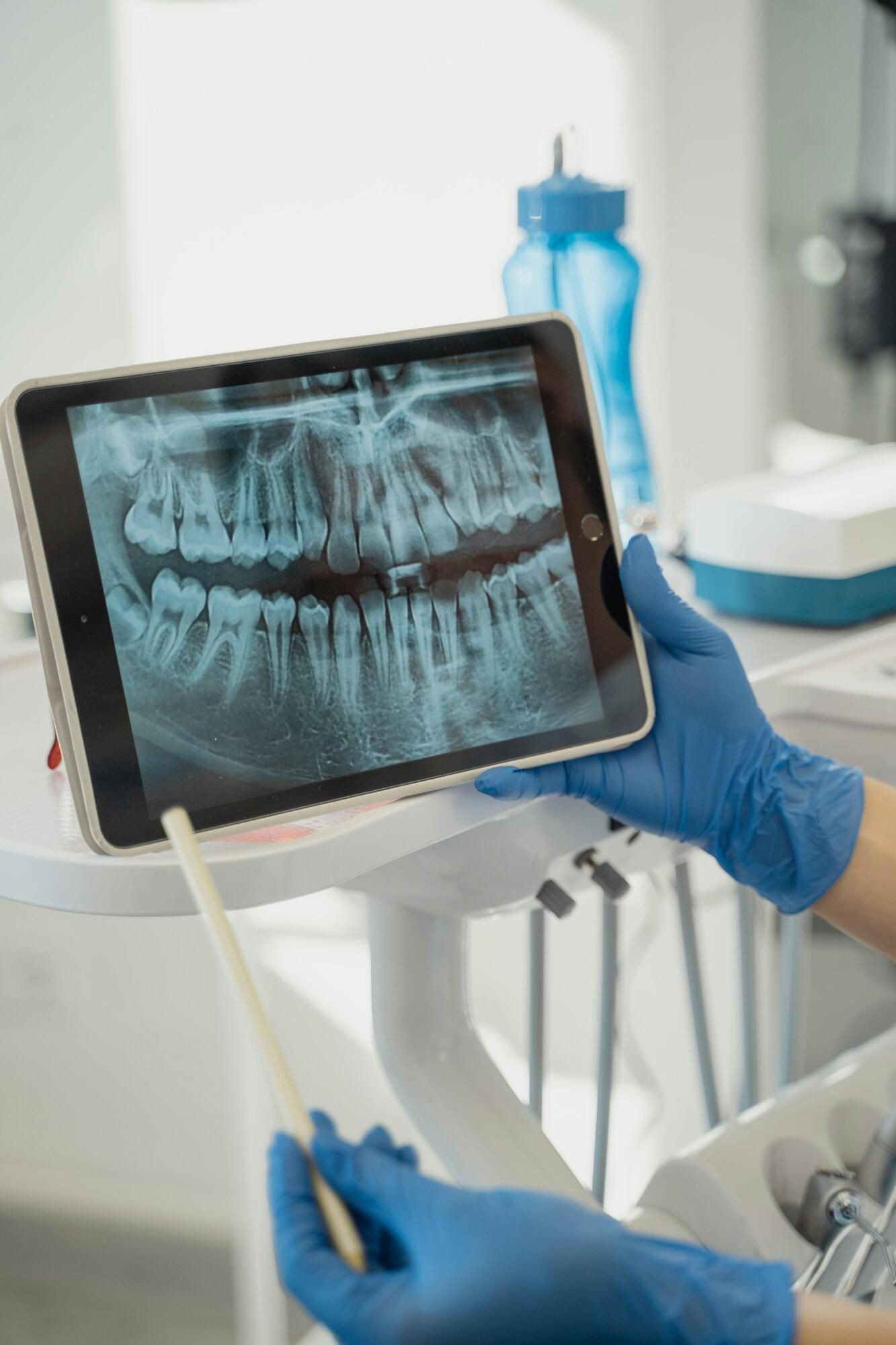Blog

Teeth misalignment can cause a crooked jaw, leading to facial asymmetry, pain, and difficulty chewing or swallowing, impacting both health and self-esteem, according to Verywell Health. If you seek help straightening teeth without the drawbacks of metal braces, Invisalign offers a discreet and effective solution. Invisalign uses clear, removable aligners to shift teeth into place gradually. Unlike traditional braces, no wires or brackets allow easier cleaning and fewer dietary restrictions. This modern approach to orthodontic treatments appeals to many seeking cosmetic dentistry solutions. This guide will delve into the benefits of Invisalign, compare it to other teeth-straightening options, and provide insights into adult teeth-straightening methods. Understanding the differences between braces and aligners can help you make an informed decision about your smile. Read on for the lowdown. How Invisalign Works Invisalign relies on a custom series of aligners that guide your teeth into place over time. You wear each clear tray for about two weeks, then move to the next in the series. Your teeth slowly shift with gentle pressure. Most people wear them for 20-22 hours a day. Treatment usually lasts 12-18 months. You take the aligners out when you eat or clean your teeth, which simplifies daily care much more than traditional braces. Aligners stay nearly invisible on your teeth. You will not have to explain why you are suddenly straightening your smile. You also will not deal with brackets or wires breaking midday. Some benefits include: No food limits Easier brushing Less irritation Clear trays let you straighten your smile without changing your life. Comparing Braces vs. Aligners Braces use metal wires and brackets; aligners use clear plastic trays. Both shift your teeth over time, but the experience feels very different. Aligners do not require monthly tightening or emergency visits for broken hardware. Metal braces work well for complex shifts but are harder to clean and can feel bulky. Aligners give you more freedom, and many adults prefer them for comfort and appearance. When weighing braces vs. aligners, consider your lifestyle and commitment. Aligners must be worn nearly full-time to work well. Braces stay on your teeth; you do not remove them. Compare key differences: Removable vs. fixed Smooth vs. metal edges Subtle vs. visible Aligners may be better for mild or moderate shifts, especially in adults. Adult Teeth Straightening Options Many adults now seek straighter teeth without traditional orthodontic treatments. Invisalign fits well into work, social, and home life, and adults also appreciate that aligners will not draw attention. Beyond Invisalign, other teeth-straightening options include ceramic braces or lingual braces. Some people even try mail-order aligners, though those come with risks. You will want to work closely with a trained dentist or orthodontist. Adults often choose Invisalign for: Low-profile look Easy upkeep No metal brackets Invisalign works quietly behind the scenes. You can attend meetings, go out with friends, and handle daily routines without the feel or look of metal. Your adult smile deserves options that match your lifestyle and goals. Benefits of Cosmetic Dentistry Invisalign falls under the larger umbrella of cosmetic dentistry. This field focuses on improving the appearance of your teeth while also enhancing function. You may fix bite issues while also boosting your confidence. Cosmetic dentistry offers treatments like whitening, veneers, reshaping, and aligners. Invisalign is unique; it transforms your entire smile without major hardware. Over time, this kind of care can also help prevent decay or jaw pain. Common reasons people choose cosmetic treatments: Boost in confidence Long-term oral health Cleaner, straighter teeth With Invisalign, your dentist maps out each step digitally. You can even preview your smile before you begin. This customized care puts control in your hands. Cosmetic dentistry is not about vanity but about feeling at ease with your smile. Orthodontic Treatments Made Simple Orthodontic treatments used to mean years of brackets and wires. Invisalign changes that. It blends function and flexibility. You move at your own pace under your provider's care. Your dentist tracks your progress with occasional visits. No wires need tightening. Each aligner builds on the last; every week brings you closer to your goal. Modern orthodontic care focuses on: Comfort Speed Flexibility Invisalign gives you structure without rigidity. You can still speak, eat well, and easily clean your teeth. No drastic life changes are needed. Orthodontic treatments have evolved; you no longer have to settle for metal. Invisalign and Daily Life Wearing Invisalign does not interfere with your routine. You can remove the aligners during meals or brushing so no food gets stuck and no tricky flossing is needed. Aligners also fit snugly, which means they do not move when you talk or smile. Many adults forget they are wearing them after a few days. The trays do not rub or poke like metal wires, and most people find Invisalign easier to live with than expected. Cost and Accessibility Invisalign costs about the same as braces in most cases. Some dental offices offer payment plans, and insurance may cover part of the treatment. Your dentist can walk you through the estimate. Aligners are now more common in cosmetic dentistry offices. You will not need to visit a separate orthodontist in many cases. More dentists are trained to offer Invisalign than ever before. What to Expect at Your First Visit Your Invisalign journey begins with a digital scan: no sticky molds or trays, just a quick 3D image of your teeth. The dentist uses that scan to design a custom treatment plan and show you potential results. You will get your first set of aligners within a few weeks. The dentist will explain how long to wear them and what to expect. The process feels simple from the very first step. How to Straighten Teeth Without Metal Braces When considering how to straighten teeth , please do not believe it has to be all about wires and brackets. Invisalign gives you a flexible, nearly invisible way to align your smile with less hassle. You can straighten your teeth while keeping your daily routine intact. Dr. Jeffrey M. Falduto, a Gold Plus Invisalign Provider, offers dentist-led care backed by 30+ years of expertise and cutting-edge technology. Every treatment is tailored, comfortable, and guided by a trusted professional who delivers real results. Contact us today to experience expert Invisalign care built around your needs.

According to the NIH, the popularity of dental implants jumped by 5% over a decade. Tooth loss can significantly impact oral health and self-confidence. Whether due to aging, injury, or decay, missing teeth affect chewing ability, speech, and facial structure. Fortunately, modern dentistry offers several dental health solutions, with dental implants being one of the most effective and long-lasting options. This guide explores dental implants, their benefits, who qualifies for them, and how they compare to other tooth replacement options. If you are considering dental implants, it is essential to understand the process and determine whether this form of oral health improvement is the right choice for you. What Are Dental Implants? Dental implants are a permanent solution for missing teeth designed to replicate the structure and function of natural teeth. The implant is a small piece of titanium placed directly into the jawbone through surgery, allowing it to act as an artificial tooth root. Once healed, an abutment is attached to the implant, and a crown custom-made for your mouth is placed on top to create a natural appearance. Compared to traditional dentures or bridges, dental implants offer superior stability and longevity, making them a preferred choice for many patients. For more details on dental implants, visit DMD's Dental Implants Page . Benefits of Dental Implants One of the best dental implant benefits is their ability to function and feel like natural teeth. Unlike dentures, which can slip or cause discomfort, implants are securely anchored into the jawbone. This stability allows patients to chew and speak with confidence. Additionally, implants help prevent bone loss , a common issue following tooth extraction. The jawbone deteriorates when a tooth is missing due to lack of stimulation. Dental implants mimic the natural root structure, preserving bone density and maintaining facial integrity. Implants are also known for their durability. They can last for decades with proper care, making them a cost-effective option in the long run. Unlike dental bridges, which require the alteration of adjacent teeth, implants do not affect surrounding teeth. This preservation of natural tooth structure makes implants ideal for those seeking a long-term dental solution. Who Is a Good Candidate for Dental Implants? Not everyone is an immediate candidate for dental implants. Several factors determine whether a patient is suitable for the procedure. A good candidate typically has: Healthy gums Sufficient jawbone density to support the implant Only a few missing teeth Individuals with gum disease or significant bone loss may require additional treatments before implanting, such as bone grafting. Certain medical conditions, such as uncontrolled diabetes or osteoporosis, may impact healing and implant success. Smoking is another factor that can increase the risk of implant failure, as it affects the body's ability to heal after surgery. However, many patients can still qualify for implants with the right treatment plan and a commitment to good oral hygiene. If you are unsure whether you qualify, schedule a consultation with Dr. Jeffrey M. Falduro, DMD, for a personalized assessment . The Dental Implant Procedure: What to Expect The dental implant process involves multiple stages, typically several months, to ensure optimal healing and integration. The dental implant placement process begins with a thorough consultation and evaluation, including X-rays and impressions, to assess bone health and determine the most suitable implant approach. If the jawbone lacks sufficient density, a bone graft may be necessary to strengthen the area before placing the implant. Next, during the implant placement surgery, a titanium post is surgically inserted into the jawbone. Healing time typically ranges from three to six months, allowing the implant to fuse with the bone through osseointegration. Once healing is complete, an abutment is attached to the implant, acting as the connection point for the final crown. Finally, a custom-made crown is placed on the abutment, restoring both function and aesthetics to the treated area. For those missing multiple teeth, options like implant bridges and All-on-4 implants provide comprehensive solutions. Potential Risks and Drawbacks While dental implants have a high success rate, there are potential risks. Surgical complications, such as infection or nerve damage, are rare but possible. Additionally, implants require a more extended healing period than other restorative options, and the overall process can take several months. Cost is another consideration . Dental implants are more expensive than bridges or dentures, and insurance coverage varies. However, given their longevity and ability to prevent future oral health issues, many patients find them a worthwhile investment. Alternatives to Dental Implants While implants offer many advantages, they are also expensive. So, what are your alternatives? Dental bridges anchor missing teeth to adjacent natural teeth, filling the gap left by missing teeth. While effective, this option may require altering healthy teeth to accommodate the bridge. Dentures in partial or complete forms offer a removable and cost-effective solution for missing teeth but may not provide the same stability and comfort as implants. All-on-4 implants present a hybrid solution, replacing an entire arch of teeth using just four strategically placed implants. This method balances traditional dentures and full implants, providing a more stable and permanent option. Talk to a professional about choosing dental procedures; they can help you decide. For a detailed look at alternative treatments , visit Dr. Jeffrey M. Falduro, DMD's Implant Dentistry. Need Dental Implants? Visit Jeffrey M. Falduto Family Professional Dentistry Whether dental implants are the right choice depends on individual needs, oral health, and long-term goals. They indeed require a more significant initial investment in terms of: Time and cost Their durability Natural appearance But, the ability to preserve oral health makes them a superior option for many patients. If you are considering dental implants, consult with the Jeffrey M. Falduto Family Professional Dentistry team. Not only do we provide expert guidance, but we can provide the procedure in a safe, comforting environment. To learn more about the benefits of dental implants, get in touch with us today.







